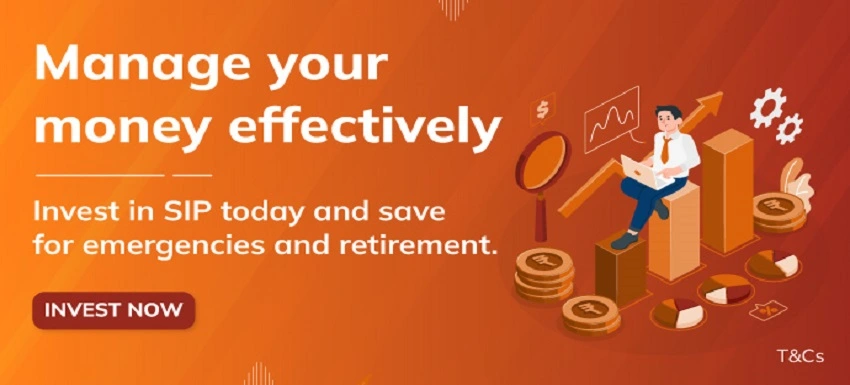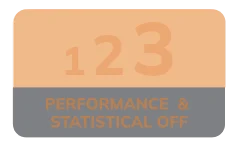THE
ORANGE
HUB
Rupee Cost Averaging: What it is, Why it Matters, and How it Works

Mutual Funds are a smart way to build wealth, suitable for both long-term and short-term financial goals. A strategy called Rupee Cost Averaging, also known as RCA, can help you make the most of your Mutual Fund investments. Understanding Rupee Cost Averaging can help you handle Mutual Fund risks better and make smarter investments in the long run. Read on to learn about the concept of Rupee Cost Averaging, its importance, working, limitations and more.
Understanding Rupee Cost Averaging
Rupee Cost Averaging can be defined as a methodology where you invest a fixed amount of money at regular intervals in a Mutual Fund, regardless of whether the market is up or down. It is generally done through a Systematic Investment Plan or SIP. Rather than trying to time the market, Rupee Cost Averaging allows you to invest consistently and eliminates emotion-led decision-making from the investment process.
Why Does Rupee Cost Averaging Matter?
1. Reduces Market Timing Risk
Timing the market is not only difficult but also risky. By using Rupee Cost Averaging, you can stay consistent with your investments. This, in turn, helps reduce the chances of making errors during market highs or lows.
2. Builds Investment Discipline
Rupee Cost Averaging helps you build the habit of saving and investing regularly. By investing a fixed amount regularly (e.g., every month), you stick to your goals and develop a long-term investment mindset.
3. Controls Panic
Markets always go through phases, both high and low. Often, investors panic during crashes or get greedy during booms. With Rupee Cost Averaging through SIP, you can invest systematically and eliminate emotion-led buying and selling.
4. Helps in Volatile Markets
Rupee Cost Averaging works best in volatile markets. Since prices move up and down, your fixed investment amount buys more units when prices are low and less units when markets are high. This averages out the cost of investment.
5. Potential to Lower Average Cost
Since you buy more units at lower prices and fewer units at higher prices, your average cost per unit reduces over time. This strategy is especially useful when investing in Equity Mutual Funds.
How Does Rupee Cost Averaging Work?
Rupee Cost Averaging (RCA) is an investment strategy where you invest a fixed amount of money at regular intervals, regardless of market conditions. This approach helps reduce the impact of market volatility over time.
Here’s how it works:
Fixed Investment Amount: You invest a consistent sum (e.g., ₹ 5,000) every month into a Mutual Fund or stock.
More Units When Prices Are Low: If the market is down, the price per unit is lower, so your fixed investment buys more units.
Fewer Units When Prices Are High: When the market is up and prices are higher, the same amount buys fewer units.
Average Purchase Price: Over time, the average cost per unit tends to even out, often lower than if you tried to time the market.
Benefits of Rupee Cost Averaging in SIP
1. Maximum Value in Volatile Markets
Rupee Cost Averaging is useful in volatile markets. It allows you to buy more units when prices dip, helping you take advantage of market lows while maintaining a steady investment approach.
2. Simple and Automated
With SIPs, Rupee Cost Averaging becomes a smooth, automated process. There is no need for manual intervention.
3. Long-Term Wealth Accumulation
Over time, Rupee Cost Averaging combined with compounding helps you grow your wealth steadily. This is ideal for long-term goals like building a retirement corpus, buying a home or saving for children's higher education.
4. Flexibility and Control
You can start with small amounts (even ₹ 500/month) and increase or pause your SIP as per your financial needs. This gives you control without demanding constant attention.
5. Peace of Mind
Investing through Rupee Cost Averaging provides a sense of psychological comfort. You know you're doing the right thing consistently, without stressing about market timing.
What is Compounding with RCA?
Rupee Cost Averaging works beautifully when combined with the power of compounding. As your money earns returns, those returns are reinvested to generate more returns. Over the years, this snowballs into substantial wealth. Even modest monthly investments can grow significantly over decades if you stay invested and let compounding do its job.
When Does Rupee Cost Averaging Work Best?
During market volatility
In long-term equity investments
For goal-based investing.
Limitations of Rupee Cost Averaging
While Rupee Cost Averaging is a useful strategy, it's important to note a few things:
1. Works best in volatile markets
Rupee Cost Averaging is most useful when markets are volatile, i.e. have frequent fluctuations. But if the market keeps rising steadily, this strategy may not help much in getting good returns – a lump sum invested at the beginning of the rise could have worked better.
2. No guarantee of profits or protection from loss
While Rupee Cost Averaging reduces risk by spreading out your investments, it doesn’t promise profits. If markets perform poorly for a long time, you could still face losses, just like with any other investment method.
3. Not ideal for lump sum, short-term investments
If you're investing a large amount for quick gains, Rupee Cost Averaging might not suit you. It's designed for regular, long-term investing, not for those who want fast returns in a short period.
Conclusion
If you're looking to invest in Mutual Funds smartly, Rupee Cost Averaging is a great strategy to consider. It makes investing less stressful, removes the guesswork of market timing and allows you to benefit from market dips over time.
Rupee Cost Averaging brings discipline, emotional balance and long-term growth potential, especially through SIPs. Whether you are new to investing or a seasoned investor, Rupee Cost Averaging through SIP is a smart way to handle market volatility and grow your wealth gradually.
Scroll to top









